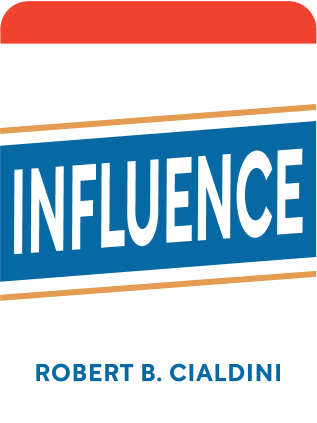

This article is an excerpt from the Shortform summary of "Influence" by Robert B. Cialdini. Shortform has the world's best summaries of books you should be reading.
Like this article? Sign up for a free trial here .
Do you feel confident after you’ve made a decision? Even if you were uncertain when weighing options, do you feel committed once a choice has been made? You may be experiencing a consistency bias that stops you from seeing that you made a bad decision.
The consistency bias is your inability to see flaws because you’re blinded by the desire to be consistent with previous actions. Behavioral consistency can be contradictory to what is rationally the best decision.
Learn how to combat the consistency bias.
The Consistency Bias
The Consistency Principle says that humans have an obsession with sticking to their guns. Consistency is closely related to commitment. Once we’ve committed to a course of action or to a belief, we pressure ourselves to conform to that commitment. We go through great mental gymnastics to convince ourselves that our current behavior and beliefs align with our past behavior and beliefs, even when they clearly don’t. This is how we end up with the consistency bias.
Like the other instincts, consistency and commitment are powerful instincts that usually do lead us to the correct conclusions and behaviors even if you occasionally have the consistency bias. Behavioral consistency is a luxury: it frees us from having to assess each situation individually.
The consistency bias creates a valuable opening for those ever-present compliance practitioners. By getting you to make just a small commitment, a skilled compliance practitioner can get you to make larger and larger ones.
Combating the Consistency Bias
So how do you resist the tricks and manipulations of compliance professionals looking to use your instinct for consistency and commitment against you?
As we’ve seen, thinking and behaving in a consistent way can be useful. It makes our lives more predictable, stable, and unburdens us from having to assess each and every situation according to its unique merits. But stubborn, rigid consistency is bad. It leads us to make the wrong choices and shut off our faculties of reason and critical thinking.
You need to know when to switch off your consistency fixed-action pattern and focus on the merits of the situation at hand.
Going With Your Gut Over Behavioral Consistency
You can feel it in your gut when you’re being lured into a compliance trap. As a reminder, this is when you’re being asked to do something or affirm something that you intuitively know you don’t want to. You need to be able to spot situations influenced by your consistency bias quickly, otherwise the compliance professional will corner you with your own commitment.
When you get this sinking feeling that you’re being manipulated, turn the table on the compliance practitioner. Tell them that you’re onto them and you know exactly what they’re trying to do. You can be perfectly blunt and direct:
“I know in my heart of hearts that I don’t want the movie magazine subscriptions that you’re selling. It doesn’t matter that I answered in the affirmative to your questions asking if I liked cinema. All you’re doing is trapping me into statements that you can then use to get me to buy something I don’t need. It would be dumb of me to throw my money away on something I don’t want, and I won’t let you manipulate me. Please leave.”
You can learn from past instances where you were lured into a consistency/commitment trap and avoid the problematic behavioral consistency this time.
After you make the poor decision, ask yourself “Knowing what I know now, would I make this decision again?” If your answer is “no,” then you know you were bamboozled by compliance trickery and your compliance bias.
The solution is to trust your instincts better. Train yourself to be attentive and listen to the little voice inside your head that tells you “You don’t actually want to make this decision. Stop yourself.”
Also, don’t over-intellectualize. As humans, we experience our feelings about something before we have time to intellectualize about it. Trust those feelings and don’t give yourself too much time to rationalize a poor decision. Make decisions for a reason; don’t make reasons for a decision.

———End of Preview———
Like what you just read? Read the rest of the world's best summary of Robert B. Cialdini's "Influence" at Shortform .
Here's what you'll find in our full Influence summary :
- How professional manipulators use your psychology against you
- The six key biases you need to be aware of
- How learning your own biases will help you beat the con men around you






